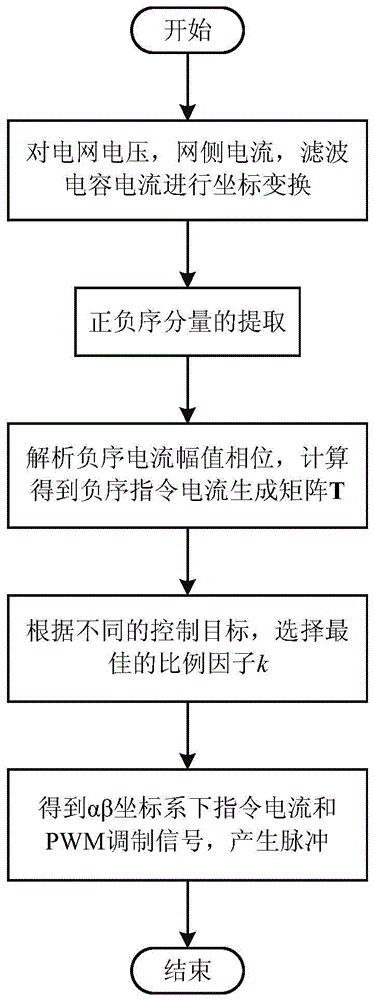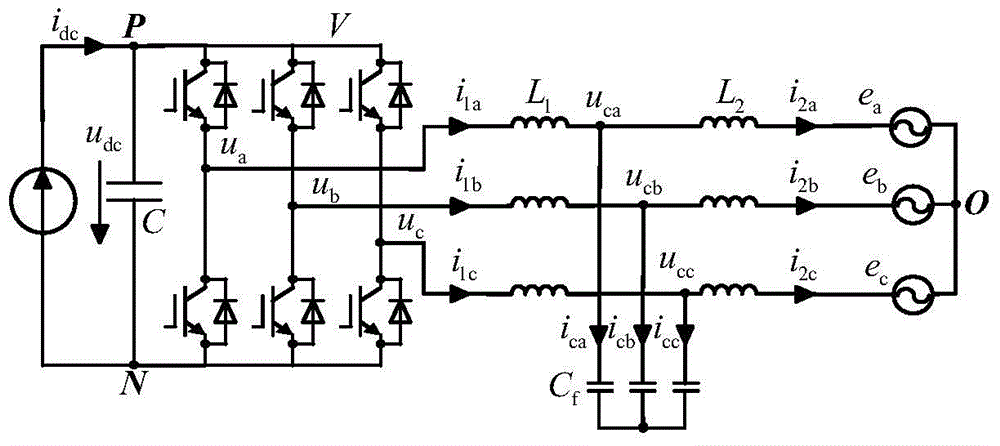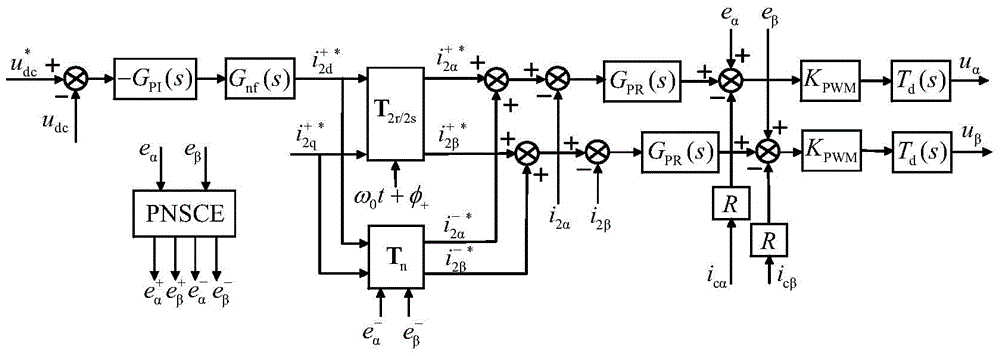An unbalanced control method for multi-objective collaborative optimization of grid-connected inverters
A technology of collaborative optimization and balanced control, which is applied in the direction of single-network parallel feeding arrangement, multi-phase network elimination/reduction of asymmetry, AC network circuit, etc., can solve problems such as the inability to coordinate the control of the three, and achieve suppression of secondary fluctuations, The principle is simple, and the effect of eliminating secondary instantaneous reactive power
- Summary
- Abstract
- Description
- Claims
- Application Information
AI Technical Summary
Problems solved by technology
Method used
Image
Examples
Embodiment 1
[0033] The grid-connected inverter multi-objective collaborative optimization method for negative-sequence current amplitude and phase analysis when the power grid is unbalanced in this embodiment is based on the grid-side instantaneous power model, and includes the following steps:
[0034] Step 1: Establish the main circuit and control circuit of the LCL filtered three-phase grid-connected inverter. The main circuit includes the equivalent DC power supply u of the distributed power generation module dc , DC side capacitor C, grid-connected inverter V, output LCL filter. The control circuit adopts the double-closed-loop control strategy of PI voltage outer loop and PR current inner loop, and adopts the capacitive current proportional feedback active damping method to suppress the resonance phenomenon of the LCL filter. The frequency ring method extracts the positive and negative sequence components.
[0035] Step 2: Sampling the voltage of the three-phase grid, the output c...
Embodiment 2
[0061] The multi-objective collaborative optimization method for grid-connected inverters based on the analysis of negative-sequence current amplitude and phase when the power grid is unbalanced in this embodiment is based on the instantaneous power model on the converter side. Step 5 of this embodiment 2 is the same as the above The fifth step of embodiment 1 is different, and the rest of the steps are the same. The step five of present embodiment 2 is as follows:
[0062] Step five:
[0063] will i 2d +* and i 2q +* In the form of a matrix and the negative sequence command current generation matrix T m Multiply and then multiply by the proportional factor k to get the α, β axis negative sequence command current signal i 2α -* i 2β -* . By adjusting k, the secondary instantaneous active power and secondary instantaneous reactive power of the converter side and the output three-phase current of the AC side can be smoothly adjusted at the same time.
[0064] define u...
PUM
 Login to View More
Login to View More Abstract
Description
Claims
Application Information
 Login to View More
Login to View More - R&D
- Intellectual Property
- Life Sciences
- Materials
- Tech Scout
- Unparalleled Data Quality
- Higher Quality Content
- 60% Fewer Hallucinations
Browse by: Latest US Patents, China's latest patents, Technical Efficacy Thesaurus, Application Domain, Technology Topic, Popular Technical Reports.
© 2025 PatSnap. All rights reserved.Legal|Privacy policy|Modern Slavery Act Transparency Statement|Sitemap|About US| Contact US: help@patsnap.com



